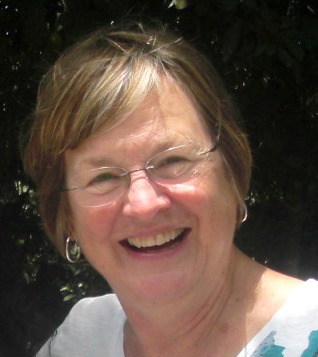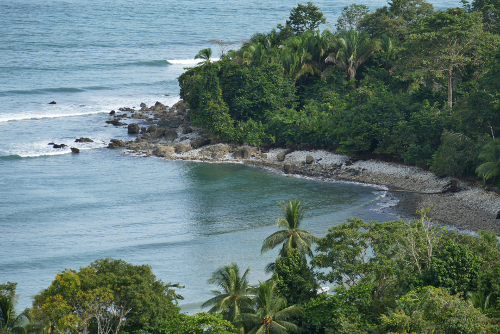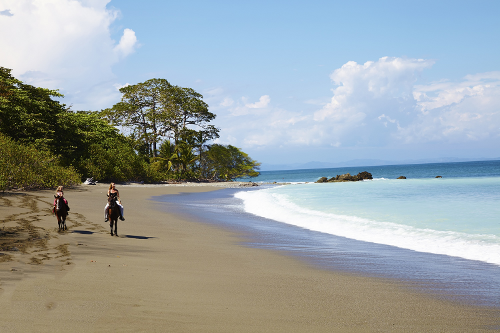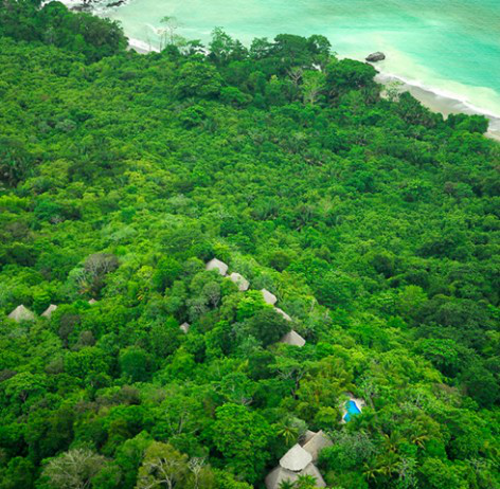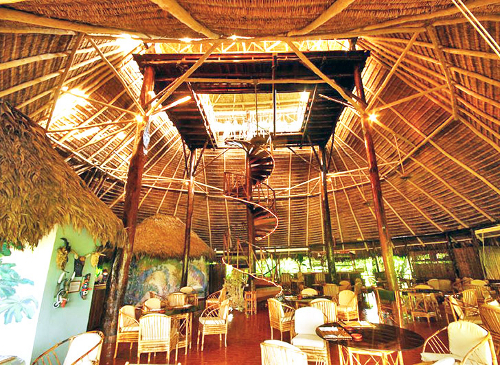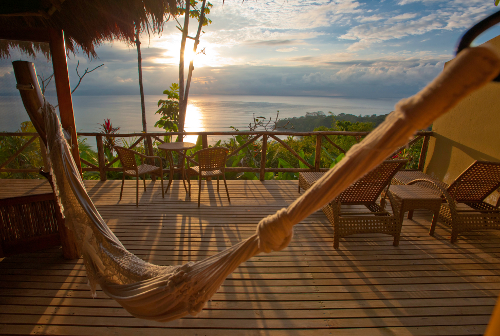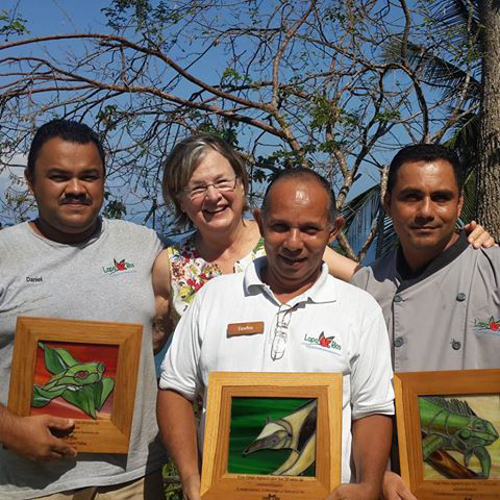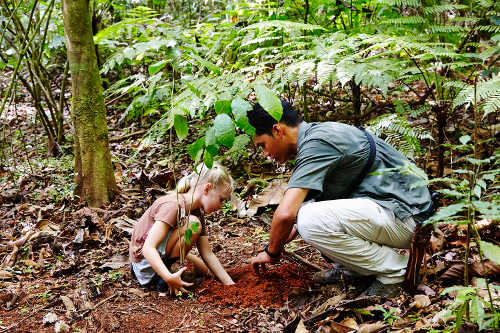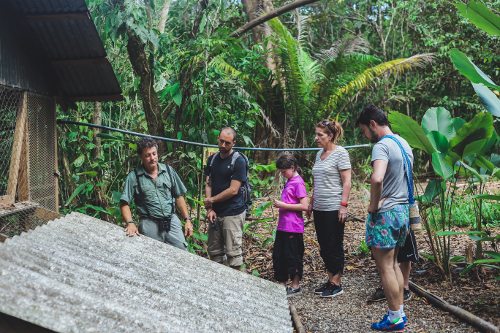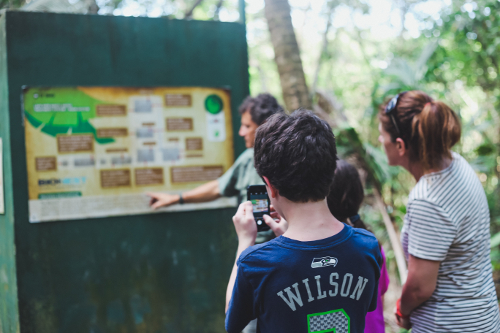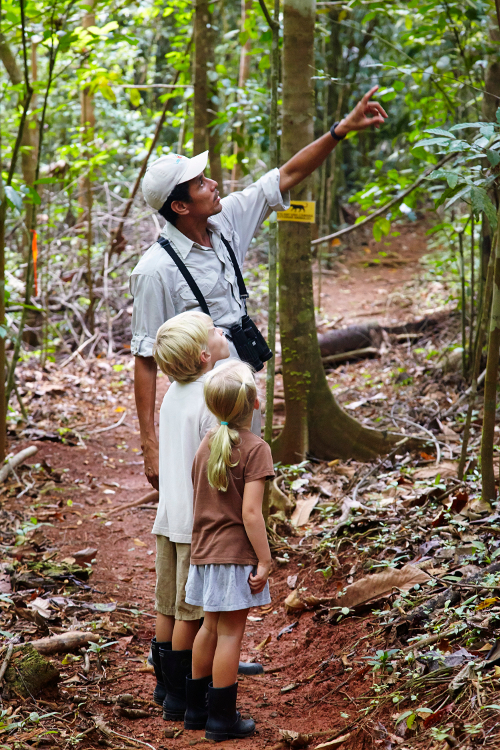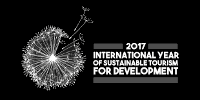Karen Lewis is an Earth Changer.
Ex Peace Corps volunteer & music teacher turned sustainable tourism pioneer, ambitious conservationist, avid ornithologist, founder of Lapa Rios, one of the most nature-immersed ecolodge experiences in the world, and recipient of the 2005 Award for Corporate Excellence.
Places
Lapa Rios came about through a dream to make a difference. My husband John and I had been Peace Corps volunteers in the late sixties as secondary school teachers in Kenya. When we took our then-teenage children back to Africa in 1988 to visit our former students and colleagues, we found that many had left their villages seeking work in Nairobi. We believed in education as a long-term empowerment tool to sustain isolated, wilderness regions. It reignited in us a desire to do something good again, to do something that would make a difference and we returned to the States wanting to eliminate the need to leave rural communities. We were again inspired to take another adventure in our lives.
The outdoors had been our passion over the years, having been formed by childhood experiences with our parents and in our early marriage, and we just decided ‘let's do something in a different culture we don't know, in a language we don’t speak, that will make a difference with a community. And fundamental to it all was that it would be conservation big enough to make a difference in the world’s biosphere.
So in early 1990, with a passion for bird watching, we spent two weeks on a trip in Costa Rica. We had work experience with a rural community and wanted to work out how to conserve land with them and decided to invest the next part of our lives in this country dedicated to the environment. We suggested the idea to the directors at the Costa Rican-USAID development agency (CINDE), but they could not be involved with any tourism project with less than 150 rooms. For us, that size would create too large an environmental impact. A smaller scale was an unknown – and a reason for us to want to try.
We knew that Osa Peninsula’s forests were still pristine and that large tracts of land, contiguous to other primary growth, could be protected. We asked the government what was there and they said ‘nothing’. We were told no one would go because it was too far away, too dangerous, and almost impossible to access. So that was where we wanted to go. In December of 1991, we purchased almost 1,100 acres, mostly old growth forest, from the top of the Peninsula down to the Golfo Dulce.
We sold up and left Minnesota in 1993 and ploughed all our money into creating our dream and building a small ecolodge to support it, recognising a growing demand in the emerging nature travel industry and we wanted to prove ecotourism was a viable model and tool for conservation finance.
Located in Central America's last remaining lowland tropical rainforest on the southern tip of the wild Osa Peninsula, and set in a dense jungle on the Pacific coast of Costa Rica where few lived (apart from a lot of bird and wildlife!), access was by a dry season dirt track only – difficult to say the least. Building a lodge over years even more so: If it had been easy, it would have been done before. The task of development within a country blessed with such biodiversity riches, without destroying them in the process, demands imagination and hard work. So we knew it would be pioneering and that we would have our work cut out, and that as our goals and CINDE's did not match, and our budget dictated small, the local community’s support would be vital.
So after arriving, we travelled by horseback to find and invite neighbours to a picnic to get to know us, as a casual, social activity to introduce ourselves and the Lapa Rios dream. Many had not even seen each other for years, some never out of the Peninsula's forest hills. These local people helped us begin Lapa Rios and were the first invited to remain as staff and the challenges of learning English, job skills and sharing local knowledge of the rainforest.
“The first years required a willingness to live in risk - believing that what we were doing was good, trusting that the human condition recognizes goodness, and confident that eventually the word would spread”.
From the start, we knew the pristine wilderness setting required focus on sustainable business practices, not ‘standard’ accommodations, a highly personalized guest experience, and overcoming huge challenges to do so: We needed to find expert architects, engineers and skilled tradespeople, and there were few if any local, willing to work in this very remote area for more than one year. Critical to success was therefore working with and training locals, supported by the few experts brought in from San José 400 kilometres away to oversee and teach. Communications were difficult. There was only unreliable phone service in the village 20 kilometres away even until relatively recently.
Once constructed of course it still wasn’t easy to access: During the first few years, guests had to fly to Golfito, then taxi-boat to the only dock in the Osa, Puerto Jiménez. As our success grew, we approached TravelAir and Sansa, who began daily flights to the Osa at the end of 1994.
Buildings were designed to minimise impact and leave a small footprint. The architectural style reflects the local heritage - open air, pole and thatch. But we didn’t make life easy for ourselves using man-made imports like concrete, instead insisting on construction materials sourced locally to focus on renewable plant materials and providing local jobs. As owner-operators, without financial backers, we could determine our own path.
And so Lapa Rios was developed as a luxury experience in wilderness. It is an experience (and not a resort, because people expect tennis courts!), as people come because the nature is everywhere, in great abundance, to be immersed in it. Even from your bed you can be woken up by the macaws flashing by or see a passing troupe of monkeys. So it’s very inspirational, and I think that wilderness is what drives people to Costa Rica, to the natural beauty of the country. And we’ve since redesigned our buildings to further honour the indigenous people and their architectural heritage.
We were so inspired when we first came to Costa Rica that the park system had already been started, in the late 70s, and the country had set aside easements to about 25% of the land, voluntary legal agreements to permanently limit the use of land in order to protect its conservation values. Now about 33% of Costa Rica’s land is in protection due to private initiatives like the Lapa Rios reserve.
People
We realised from the beginning, and teaching roots, that the project was as much about education and the remote community’s local people, as it was protecting the environment, which could serve to bring them professional opportunity and new life skills. Without people, the experience of a location becomes secondary regardless its natural beauty, distance from civilization or amount of pristine land in protection.
And at the start, the local people came and asked us to help build a primary school. So as we were designing and constructing the ecolodge in 1992, we also created a Foundation to support the construction of a primary school, requiring raising $45,000 for a pre-fab kit including two classrooms, a dining hall, a lavatory with flush toilets, and a teacher's house. While raising the funds, we hired a taxi-truck to take the children every day to the primary school in Puerto Jiménez, until it was finished in 1993 with an injection of luck and help from the US National Guard Corps of Engineers, who we overheard scouting for local projects to complete their yearly required commitments!
But community education isn’t just about developing skills such as reading and writing, but also independent thinking, conveying new ideals like sustainability and sharing, and building self-esteem. So Lapa Rios became a school for everyone, helping support a community around the idea of conserving the rainforest, as well as educating guests to a level of luxury experience like found in leading resorts worldwide, including the local community and natural environment.
“Most people come to Costa Rica expecting wildlife, but they leave Lapa Rios not just remembering wildlife, but they remember our staff, because they are so genuine, and complete that circle of honouring the sustainability: People who treat the earth well, treat people well.”
Locally trained naturalists not only excel in interpreting the forest relative to their life experiences, but being authentic with people and their home is being sustainable. Education is the hook for ecotourism, interaction and connection between staff, community and guests the glue to support for community development projects. And so today, with almost 60 employees, Lapa Rios Ecolodge is one of the most renowned and successful ecotourism operations in the world, and a model of sustainable development and tourism.
Purpose
“A forest left standing is more valuable than one cut down.”
That's the Lapa Rios mission, and it helps people make decisions.
A traveller is someone who is curious about the people and the place. They can choose then a destination that will make a difference because of their being there. The guest comes for wilderness. But the secret of our success is that we have always worked with our community. So in guests coming to experience wilderness, they become dearly attached to our staff and community through projects in which our staff and guests get involved together.
We have guest activities and excursions like the reforestation program, where guests can plant a tree, and the sustainability-behind-the-scenes ‘Twigs, Pigs and Garbage Tour’, where by the pigs eat the restaurant leftovers, creating bio-gas to fuel the staff kitchen. The produce is local, some even home-grown. And by working with our community and learning together how precious where we live is, we have been able to turn lives around in agreement with our mission statement.
So the community have improved the way they respond to actions. Some things do require change, so they know they’re going to have to learn, such as to learn to turn off a tap, because by doing so lowers water consumption and charges.
Sustainable tourism, is not just how you sustain the environment, through the conservation that we’ve set aside, but also how you sustain the local people and their culture. We thought, if we keep things in a great balance, and not cut down the forest, we probably could create a business, and together we would improve the Osa Peninsula. So we always ask, “does this solution negatively affect the surrounding natural resources and community, now or in the future?”
Combining tourists’ desires for wilderness with conservation and the community, good management practices, customer services and promotion, it was then important to have an 3rd party audit and authenticate veracity, as no owner-management voice should supersede outside vetting. That was provided in 1999 with the Costa Rican government’s then-new initiative, the Certification for Sustainable Tourism (CST). As with any system that advocates excellent standards and best practices, it is an on-going, laborious, time- and patience- consuming, costly and unending process. It requires total honesty of past and present actions, to accept that improvement is possible and to determine what that should be, plus a commitment and cooperation of management, staff and even non-associated local people. But, if properly executed over time, improves a business’s financial, social and environmental bottom line, one step at a time.
You can begin slowly, with small projects that require changes in habits, but only when ALL people involved in the process have a full understanding to the expectations. It is imperative to teach the reasons behind the change, what the improvement will add. Then, dedication to improve and excel can gain momentum as more people understand and realise the synergies and benefits.
So by becoming certified and awarded the coveted maximum 5 Leaf certification rating (since 2003, the first in Costa Rica to be awarded and still just one of two), Lapa Rios demonstrates it leads the Costa Rica tourism industry by its values.
Many destinations use the title ‘eco-X’ simply because they are close to a natural reserve, have vegetation or are built in the forest or in some pristine location – it does not make it sustainable just because they say so. Being certified sustainable by an external party was important to us as a verification of our best practice.
Internally, it means we gather information, analyse and improve our operations management, exchange best practices and products and are always on the search for sustainable alternatives to standard business, equipped with a trail of property-unique audit information from checklists, timely routines and reporting. That’s on everything from recycling and rubbish data to projected goals and use of electricity and water, monitored organic and biodegradable product suppliers, to community projects development and funding. Short and long range planning become more straightforward, efficient and effective and it drives us to higher standards.
To guests, it provides better service, quality, and a guarantee we do what we say. Our guests learn about best sustainability practices, native plant species and renewable building products, and in doing so it thus teaches them about the value of their travel choice so that they will come to determine holiday selection by those that do make a difference to natural resources and community. We’ve also been hugely helped by Cayuga sustainable hospitality management company, who’ve provided us leadership since 2000, championed our mission and supported our continued success.
In 1999 we hosted a conference: "The Ecolodge Owners' Dilemma: Designing toward the next generation. We discussed how an ecolodge owners’ responsibility includes sound succession planning with an exit strategy that includes biodiversity protection to what is already in place, resisting mass developers and tourism buyers, and continuation of ecotourism services.
This culminated in 2013, when we were delighted to sign a conservation easement elaborated by The Nature Conservancy and CEDARENA [the Costa Rican Environmental and Natural Resources Law Center] to ensure that this primary forest will always be preserved in perpetuity, a unique business agreement meaning the land will be conserved regardless who owns the business and the next owners can use the Lapa Rios Reserve only for educational purposes.
So we were gratified to honour, in 20 years, what we set out to do.
How you can be an Earth Changer:
Visit Lapa Rios for splendid and sustainable trip
Immerse yourself in nature where pristine rainforest meets secluded shores in one of the most stunning ecolodge experiences in the world.
Earth Changers recommends
... considering the magnitude of dedication and tireless work Lapa Rios has undergone for its many awards for quality guest experience and sustainable tourism.
Among them, on 2nd November, 2005, Karen Lewis was presented with The 2005 Secretary of State's Awards for Corporate Excellence by U.S. Secretary of State Condoleezza Rice, at the State Department in Washington D.C.
The Award is designed to recognize the important role that US businesses play in advancing good corporate governance and democratic principles worldwide.
“To be around Karen, watch her bird-watching, you realise she lives her life like today is the first day of her journey”


